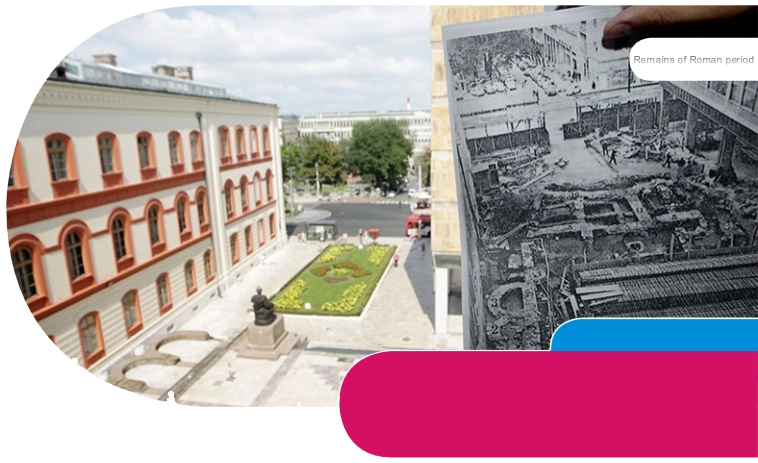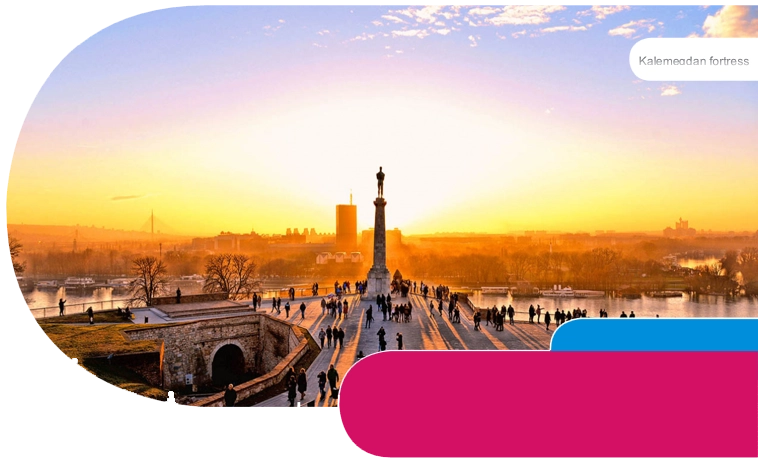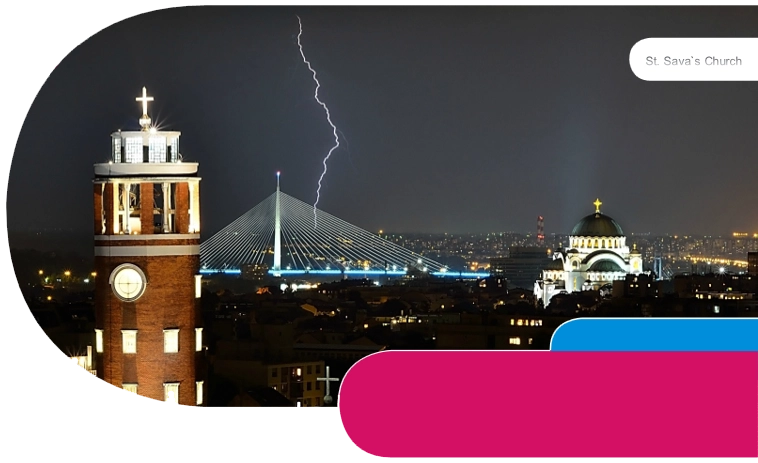Belgrade, one city, fifteen names
The city of Belgrade is a place where world collide, where ancient history merges with medieval times which again merge with the contemporary age. Located on the intersection of the Danube and Sava river, it was destined to be the centre of Balkan culture.
With the Celts naming their settlement Singidun(on), Belgrade went form that to Singidunum and since then it has been known by many names including Alba Graeca, Alba Bulgarica, Fehervar, Nandoralba, Nandorfehervar, Landorfehervar, WeiBenburg and Griecnisch-WeiBenburg, Castelbianco, Veligrad(i)on/Velegrada, Dar Al Jihad, Belgrat, Prinz Eugen Stadt.
But the name that stuck to this day is Beograd (the White city), mentioned for the first time in 878 in a Papal letter to the Bulgarian ruler Boris I.

Belgrade, the white phoenix
Today there isn`t a single location in old town Belgrade that doesn`t hide remnants from Roman period. The first urban settlement was built here in 3rd century BC by Celts. It was conquered by the Romans in the 1st century BC and named Singidunum.
Belgrade is one of the oldest cities in Europe with settlements continuously existing here for at least 7000 years. Not far from Belgrade centre resides a culture older than the settlements in Mesopotamia.
The White city was fought over countless times, destroyed and rebuild times over and as a result emerged with a strong spirit which can be found in its architecture, landmarks, in its people and the overall way of life.
Throughout history many nations have fought over it resulting in the city being razed to the ground and rebuilt as many as 38 times throughout its history.

Belgrade, the capital
In the 5th century, the Belgrade fortress was destroyed by the Huns and in the early Middle Ages saw an onslaught of Barbarian tribes, including the Slavs. A legend even says that Attila`s grave lies at the confluence the Danube and the Sava river, more precisely under the very fortress.
Once Kalmegdan was a fortress (kale) and a field (megdan) and now is on of the most important cultural-historic sites, a park and a playground, a lookout and a Zoo, a concert venue and so much more. Belgrade became the capital city of Serbia in 1841.
The city is steeped in a rich cultural and historic heritage which is reflected in its many museums. Its numerous monuments, which have become the city`s symbols bear witness to the turbulent history of Serbia and the Serbian capital.

Belgrade, the city underneath the city
Belgrade has so many secrets, one of them hides inches below the surface, literally. More than one hundred caves, canals, tunnels, passages tell the story of its connections to various empires and states that ruled in Belgrade over the ages.
Underground Belgrade has always attracted tremendous attention.
The Church of Saint Sava is one of the most recognizable symbols of Belgrade. Its dome is 70m tall and on top of it is a 12m high gold-plated cross.
With its reaching a height of 87m in total, this Church represents one of the largest churches in the world and the largest church building in the Balkans.






